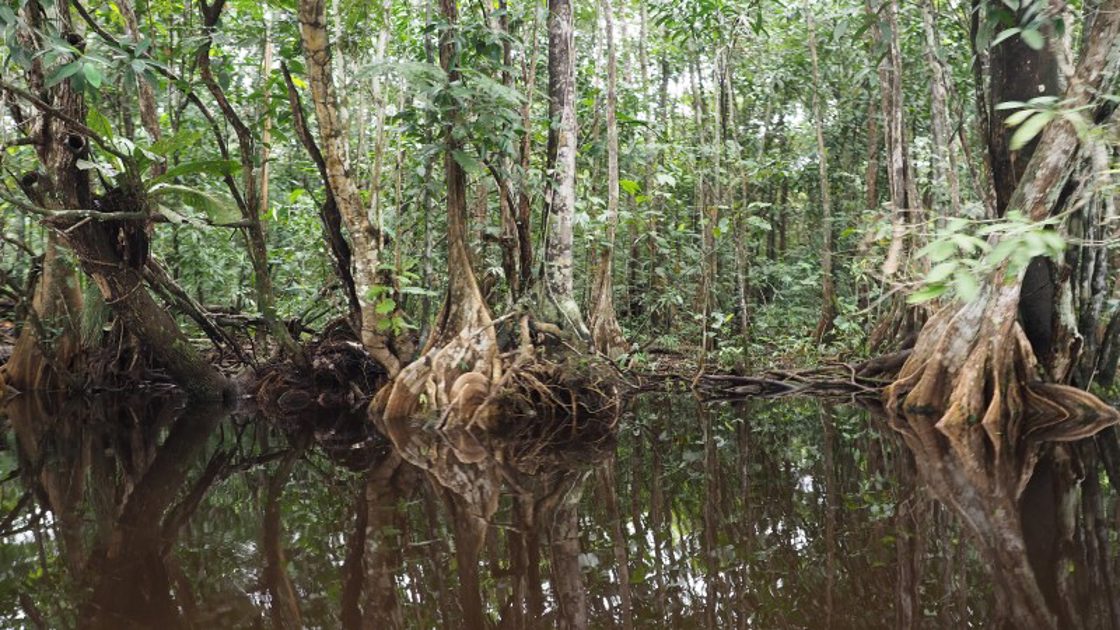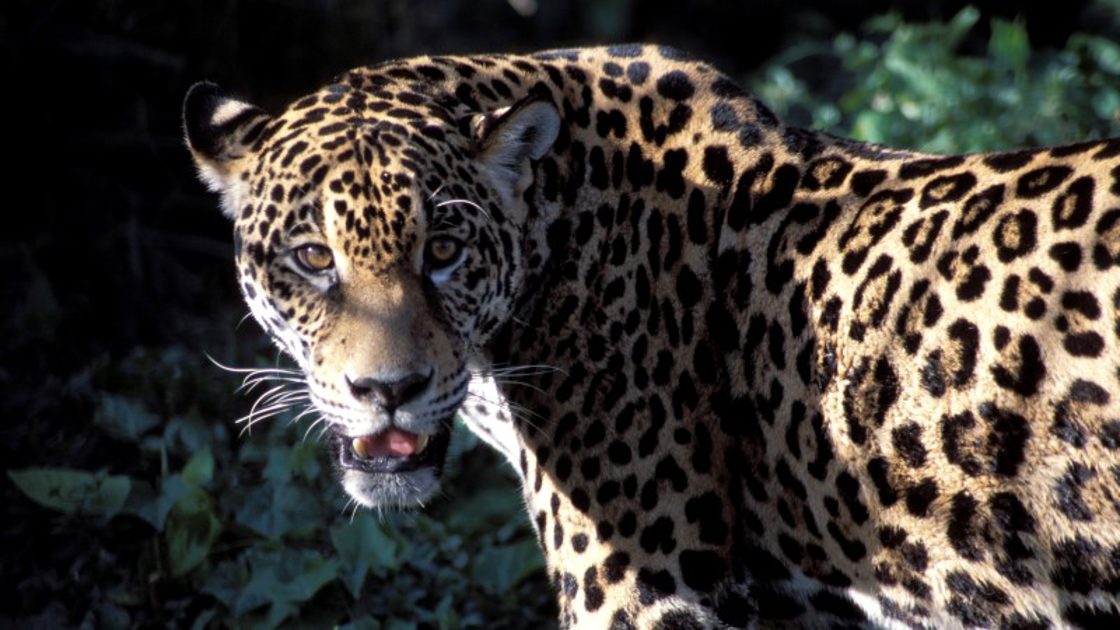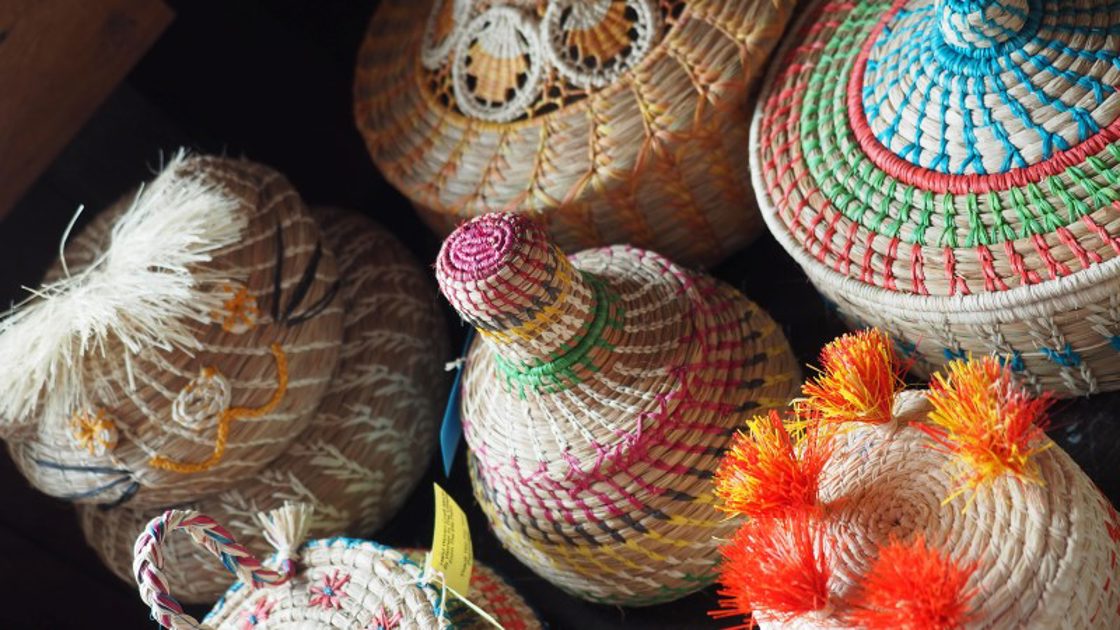Guyana
Historical archive
Published under: Solberg's Government
Publisher: Ministry of the Environment
Article | Last updated: 22/12/2016
Since 2009, Guyana and Norway have collaborated to promote green development in Guyana while keeping deforestation at low levels.

Guyana's rainforest
Guyana's Green Development Path
REDD+ and Low Deforestation Countries
Norway's climate and forest partnership with Guyana
Results to date
Supported projects
Amaila Falls Hydropower project
Results reporting
Partnership documents and background information
Press Releases
Other relevant reports
Guyana's Rainforest
Guyana's almost untouched rainforest sits on an ancient geological formation called the Guiana Shield in the northeast of South America. The biodiversity of these rainforests is immensely rich and is home to a large number of rare species, such as the giant otter and jaguars. They provide the basis for existence for a number of indigenous peoples' groups, store and continue to absorb large quantities of carbon, provide income from eco-tourism, timber and other forest products, produce water, regulate precipitation and contribute a range of other indispensable ecosystem services.

Guyana's Green Development Path
Its rainforest covers about 85% of Guyana's land mass. Unlike countries such as Brazil and Indonesia, deforestation in Guyana is very low, both historically and today (0.065% in 2014). Guyana ranks 124th out of 188 countries on the United Nations Development Programme's Human Development Index and is classified as a lower-middle-income country by the World Bank. The path to economic growth and development for poorer countries has historically been through earning money from large-scale logging and other industries that contribute to the destruction of forest. The Guyanese government wants to pursue an alternative path to development, and has a national strategy for economic and social development without increasing deforestation.
In 2015 the opposition won the General Election in the first change of government for 23 years. The previous government's Low Carbon Development Strategy describes how Guyana can limit greenhouse gas emissions from deforestation, convert almost its entire energy sector to renewable energy and accelerate the development of low-carbon industries. President Granger has confirmed that Guyana will continue along a green development path and a new national plan for greening of the economy is under development.
REDD+ and low deforestation countries
The Paris Climate Agreement of 2015 includes a target of “holding the increase in the global average temperature to well below 2°C above pre-industrial levels”, and further, to "pursuing efforts to limit the temperature increase to 1.5°C". A vital part of these efforts include paying developing countries to reduce emissions from deforestation and forest degradation (REDD+). This is why agreement on the importance of REDD+ was included in the Paris Agreement.
Approximately 20% of the world's remaining tropical forests are found in countries like Guyana, with high forest cover and very low deforestation rates. In these countries, deforestation is not high enough to receive compensation for reduced emissions from deforestation. In the absence of economic incentives for such countries, there is a real risk that deforestation could 'leak' from current high deforestation countries to low deforestation countries. In order to avoid such leakages, countries that have maintained most of their forests should be compensated financially for avoided deforestation. Guyana and Norway want their climate and forest partnership to present an international model for how this can be achieved in practice.
Norway's climate and forest partnership with Guyana
Norway and Guyana signed a climate and forest partnership in November 2009. The partnership was expected to last until the end of 2015. However, due to some delays in implementation, a decision was made to continue the partnership based on annual approval by the Norwegian Minister of Climate and Environment, until Guyana has reached its goals as stated in the MOU and adhering Joint Concept Notes. Norway's support to Guyana could add up to NOK 1.5 billion in total.
The forest partnership with Guyana has two result components: 1) continued low deforestation, and 2) improved governance in the forestry sector. The agreement between Guyana and Norway carefully sets out how payments for low deforestation are calculated based on deforestation results in previous years. For example, the payment is reduced gradually if the deforestation rate exceeds the 2010 level of 0.056% and halt completely if the deforestation rate reaches 0.1%. Results relating to improved governance in the forestry sector are based on an objective appraisal. For details see the Joint Concept Note and Technical Note on Payments below. Norway pays Guyana in arrears for results achieved the previous year.
Results to date
So far, Norway has paid Guyana about 150 mill. USD for results relating to low deforestation and improved governance. Approximately 70 mill. USD has been channelled through the Guyana REDD+ Investment Fund (GRIF), administered by the World Bank. Guyana spends the money on projects to realise Guyana's low carbon development strategy. All projects are implemented by either the World Bank, the Inter-American Development Bank (IDB) or the UN Development Programme (UNDP), and thus adhere to their strict rules and safeguards.
Supported projects
Eight projects are currently receiving support under the GRIF. Results include the approval of 167 loans and grants worth over 1 mill. USD to micro and small enterprises in low carbon sectors. A development fund has been established to support the socio-economic development in indigenous communities and ca. 1,3 mill. USD has been disbursed to 90 communities. A new project to reduce Guyana's vulnerability to floods was initiated in 2015.


Read more about ongoing and planned projects.
Read more about Guyana REDD+ Investment Fund (GRIF)
Amaila Falls Hydropower Project
Approximately 80 mill. USD has been transferred from Norway to the IDB for Guyana's Amaila Falls Hydropower Project. The funds correspond to Norway’s payments for Guyana’s deforestation results in 2011 and 2012 and were transferred in two tranches (see agreements linked below).
- Amendment to Norway-IDB Letter Agreement for transferring funds for Amaila Falls, January 2015.
- Norway-IDB Letter Agreement for transferring funds for Amaila Falls, December 2014.
- Norway IDB extension agreement, July 2016
- Norway IDB extension agreement, Dec 2016
In 2015, Guyana and Norway agreed to do a fact based review of the plans for the Amaila Falls Hydropower Project. The independent review by Norconsult does not represent the views of the Government of Guyana or the Government of Norway, and is not a decision document.
Guyana's President Granger and Norway's Minister of Climate and Environment, Vidar Helgesen, agreed on a way forward at a meeting on the sidelines of the Marrakech climate summit and issued a joint statement.
Reporting on results:
Guyana has developed the world's first national system for monitoring of forest cover and carbon content with the money earned from continued low deforestation.
-
DNV-GL Verification report for the forest year 2014, April 2016
- DNV-GL verification report for the forest year 2013, April 2015
- Deforestation report from Guyana Forestry Commission, November 2014
- Government of Norway's assessment of progress on enabling indicators, May 2015
- Government of Guyana's self assessment of progress on enabling indicators, April 2015
- Verification report from Det Norske Veritas, December 2013
- Results report from the Guyana Forestry Commission, 2013
- Independent evaluation of Guyana's progress on governance for 2012/13, November 2013
- The Government of Guyana's own report on progress on governance in the forestry sector, August 2013
- Results report from the Guyana Forestry Commission, July 2012
- Verification Report from Det Norske Veritas (DNV), September 2012
- Rainforest Alliance - Verification of REDD+ Enabling Activities in Guyana, December 2012
- Results report from the Guyana Forestry Commission, March 2011
- Verification Report from Det Norske Veritas (DNV), March 2011
- Rainforest Alliance Report on Verification of REDD+ Enabling Activities in Guyana March 2011
Agreement and background documents:
- Joint Concept Note, May 2015
- Technical Note on Payments, May 2015
- Joint Concept Note, December 2012
- Technical Note on Payments, December 2012
- Actions taken by the Government of Guyana, July-December 2012, related to the verification report
- Joint Concept Note 31 March 2011 (PDF)
- Summary of the Joint Concept Note 31 March 2011 (PDF)
- Memorandum of Understanding, November 2009 (PDF)
- Joint Concept Note, November 2009 (PDF)
- Norway's agreement with the World Bank for the establishment of the Guyana REDD+ Investment Fund (GRIF) (with appendices)
- Guyana's Low Carbon Development Strategy
- Norway and Guyana – a partnership for reduced forest carbon emissions(technical note) (PDF)
Press releases:
- Guyana and Norway agree on how to take partnership dialogue forward (Nov 2016)
- Norway and Guyana reconfirms collaboration on climate and forests (June 2016)
- Guyana keeps deforestation low (March 2016)
- Norway announces new contribution to Guyana for its continued low deforestation, 21 December 2012
- New payment from Norway in the forest partnership with Guyana, 1 April 2011
- Norway ready for first payment to Guyana, 9 October 2010
- Solheim signs historic rainforest agreement with Guyana, 9 November 2009
Other relevant reports:
- Review of Guyana LCDS Consultation Process (report from the International Institute for Environment & Development (IIED))
- Forest Law Enforcement and Governance and Forest Practices in Guyana (report by CIFOR and IWOKRAMA)
- Measurement and Reporting of Forest Carbon in Guyana (UN-REDD Programme 2009)